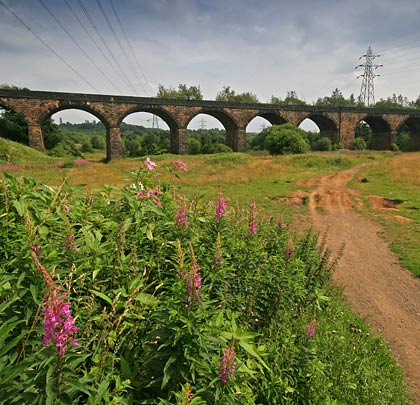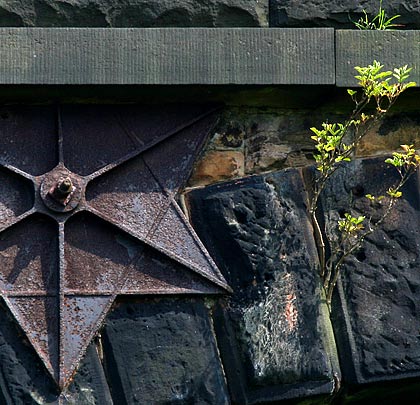Clifton Viaduct
Clifton Viaduct
















In September 1843, a group of businessmen met to discuss the building of a railway to serve districts of north-east Lancashire. This resulted in the creation of the Manchester Bury & Rossendale Railway company, with the intention of constructing a line from Bury to Clifton, where it would connect to the Manchester & Bolton Railway, as well as a northerly extension to Rawtenstall. Their bill received Royal Assent in July 1844, authorising the company to raise £300,000 and borrow a further £100,000. Strong financial support was forthcoming from local businesses.
May 1844 saw the awarding of two contracts to Manchester firm Pauling & Henfry who tendered £167,529 for the construction of both sections, however they were subsequently dismissed and John Waring appointed in their place. Much of the work was outsourced to subcontractors.
Extending for over 300 yards, Clifton Viaduct escorted the line over both the River Irwell and Manchester Bolton & Bury Canal. Built from rock-faced stone but with brick soffits, it comprises 13 segmental arches springing from impost bands. The river span is longer than the others – measuring 96 feet – and is flanked by king piers that rise to the coped parapet. The deck is 80 feet above water level. At its northern end, the structure curves to the west on a radius of around 45 chains. It would appear that the piers originally incorporated arches to reduce their weight and focus the forces, but these have subsequently been infilled with brick.
In 1845, the MB&BR joined forces with the Blackburn & Preston Railway to become the East Lancashire Railway. The line was opened on 28th September 1846, having been inspected five days earlier by Sir Charles Pasley, Inspector-General of Railways. Closure came on 5th December 1966. In September 1987, Clifton Viaduct was afforded a Grade II listing and now acts as a landmark for drivers on the M60.
 May 2012
May 2012




